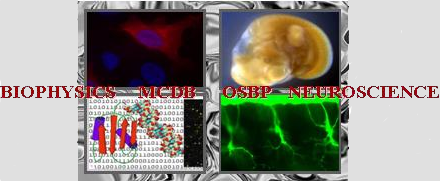Poster abstracts
Poster number 6 submitted by Aparna Odayil Muralidharan
βIV-Spectrin signaling cascade influences the macrophage activity and recruitment
Aparna Odayil Muralidharan (Molecular, Cellular and Developmental Biology Program), Rebecca Shaheen (Biomedical Engineering), Drew M. Nassal (Physiology and Cell Biology), Xianyao Xu (Department of Internal Medicine), Mei Han (Department of Internal Medicine), Prof. Thomas Hund (Department of Internal Medicine)
Abstract:
Myocardial infarction (MI) is responsible for 1 million deaths in the United States alone. MI results from the occlusion of coronary circulation leading to an insufficient supply of oxygen to the myocardium. Acute loss of myocardium is followed by left ventricular remodeling involving changes in the chamber geometry, wall structure and pump function. Growing evidence supports a central role for different macrophage (MP) populations, including those endogenous to the heart (cardiac resident), in orchestrating the repair process following MI. Proper MP function is essential for the healing process and any disruption can result in adverse remodeling events with enhanced inflammation and rupture. Cytoskeletal rearrangement in MP is associated with changes in activity and morphology. However, the precise mechanisms linking stress-induced changes in the cytoskeleton and MP behavior remain understudied.
Our group has identified a critical role for the cytoskeletal protein βIV-spectrin in modulating the cardiac response to MI. βIV-spectrin organizes a signaling complex with the multifunctional pro-fibrotic transcription factor Signal Transducer and Activator of Transcription 3 (STAT3). To test the role of βIV-spectrin /STAT3 in MP activity and repair following MI, we subjected wildtype mice and mice expressing mutant βIV-spectrin with gain-of-function (qv3J) to permanent occlusion of the left anterior descending artery to induce MI. The qv3J mice show abnormal levels and activity of cardiac-resident MP (rMP), defective scar formation, and increased incidence of ventricular rupture following MI compared to WT. Flow cytometry and cell sorting will be used to isolate rMP and non-resident rMP (non-rMP) from WT and qv3J mouse hearts at baseline, 3 and 7 days post-MI. Migration, phagocytosis, cytokine release and expression of anti- and pro-inflammatory genes will be evaluated in rMP and non-rMP from all groups. We expect these studies to identify a novel spectrin-based pathway for regulation of rMP activity and healing following MI.
References:
1. Mechanic, O. J., Gavin, M. & Grossman, S. A. Acute Myocardial Infarction. in StatPearls (StatPearls Publishing, Treasure Island (FL), 2024).
2. Left Ventricular Remodeling After Myocardial Infarction. https://www.ahajournals.org/doi/epub/10.1161/01.CIR.101.25.2981 doi:10.1161/01.CIR.101.25.2981.
3. Kubota, A. & Frangogiannis, N. G. Macrophages in myocardial infarction. Am J Physiol Cell Physiol 323, C1304–C1324 (2022).
4. Mei, J., Huang, X., Fan, C., Fang, J. & Jiu, Y. Cytoskeleton network participates in the anti-infection responses of macrophage. BioEssays 45, 2200225 (2023).
Keywords: Myocardial infarction , Macrophages, Spectrin
